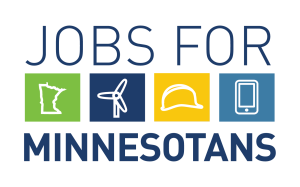An Economic Call to Arms
Ely Echo
Tom Coombe
With household income lagging far behind state averages, the downtown dotted by empty storefronts and school enrollments resting at a fraction of previous highs, a parade of Ely area leaders said Tuesday that it’s time to do more to spur job creation in the region.
That may include an alliance and perhaps even local government funding for Up North Jobs, a newly-formed nonprofit that’s promoting economic development in the region and fighting opposition to copper-nickel mining projects.
Gerald Tyler, who formed Up North Jobs two months ago and serves as its chairman and executive director, went before Ely council members during their monthly study session and was joined by representatives of several area governments and local entities.
Tyler said that Up North Jobs has joined a statewide coalition – Jobs for Minnesotans – and hopes to enroll 3,000 members over the next year.
Read more: http://www.elyecho.com/main.asp?FromHome=1&TypeID=1&ArticleID=12903&SectionID=2&SubSectionID=2
Iron Range Engineering Gains Accreditation
Business North
The Daily Briefing
Iron Range Engineering (IRE) has earned accreditation, which is being retroactively applied to all previous IRE graduates.
“The exciting news of Iron Range Engineering receiving ABET accreditation represents tremendous value to the business community in Northern Minnesota,” said Robb Bigelow, project manager at Magnetation, Inc. “The accreditation provides those of us in industry who are looking to find top-end engineering talent only more evidence that the students of IRE are ready to step through our doors and work at an extremely high and productive level.”
“The announcement of the accreditation is exciting news for northeastern Minnesota,” said Tony Sertich, commissioner of Iron Range Resources. “The Iron Range Engineering program is evidence of the IRRRB’s commitment in investing in education-based economic development. This program allows northeastern Minnesota to grow its own talent to meet the needs of our region’s economy.”
Read more: http://www.businessnorth.com/briefing.asp?RID=5522
Letter: Learn The Facts About Mining
West Central Tribune
Frank Ongaro
On behalf of the strategic metals mining industry, I want to thank you for your thoughtful editorial “All Minnesota has stake in mining debate.” Minnesota does have incredible natural resources across the state, and we could not agree more with the absolute need to protect what matters most to all of us — clean air and water.
The Duluth Complex, a rich strategic metals deposit discovered more than five decades ago, runs near the same area that forms the Iron Range in northeastern Minnesota. Technology now available will allow for safe, efficient and economical extraction of the metals, including copper, nickel, cobalt, platinum, palladium, and gold.
These technological advancements, combined with the global need for these metals for use in everything from wind turbines to heart stents, presents an opportunity for our state and for the people who live here — to benefit from a new industry that will grow our tax base and sustain our communities for generations to come with the potential for thousands of direct and indirect jobs.
Read more: http://www.wctrib.com/node/1574936
Rigorous Standards Will Ensure Clean Mines
Duluth News Tribune
Opinion: Frank Ongaro
From President Obama to Gov. Mark Dayton, elected officials have made jobs a top priority. In Minnesota, one thing is certain: There is no better opportunity for creating thousands of great-paying jobs, providing millions of dollars in tax revenue for local governments and generating more than $2 billion in royalties for our schools than the proposed copper/nickel strategic metals mineral development projects.
Mining already represents 30 percent of our region’s Gross Domestic Product (tourism is 11 percent). And, with the development of these strategic metals projects, we easily can double the size and benefit of the overall mining industry in Minnesota.
Fortunately, we can have these jobs and the spin-off economic benefits they bring — and an environment with clean air and water. There is no debate. We all want the same thing: clean air and clean water.
Read more: http://www.duluthnewstribune.com/event/article/id/275468/group/Opinion/
Good News for PolyMet
Hibbing Daily Tribune
Anna Kurth
The U.S. Environmental Protection Agency (EPA) has completed its review of the preliminary supplemental draft Environmental Impact Statement (EIS) for the development of Polymet’s Minnesota copper and nickel mine.
Polymet Mining President and CEO Jon Cherry made the announcement Tuesday during the Canada Connections business event held at Hibbing Community College.
